LOS ANGELES: “Everything Everywhere All At Once” came in the Oscar favorite, and it’s winning like one, too. Michelle Yeoh, Ke Huy Quan and Jamie Lee Curtis all won acting honors Sunday while the filmmaking duo known as the Daniels, Daniel Kwan and Daniel Scheinert won for both directing and original screenplay.
Yeoh became the first Asian woman to best actress, taking the award for her lauded performance in “Everything Everywhere All at Once.” The 60-year-old Malaysian-born Yeoh won her first Oscar for a performance that relied as much on her comic and dramatic chops as it did her kung fu skills. She’s the first best actress win for a non-white actress in 20 years.
“Ladies, don’t let anyone ever tell you you’re past your prime,” said Yeoh, who received a raucous standing ovation.
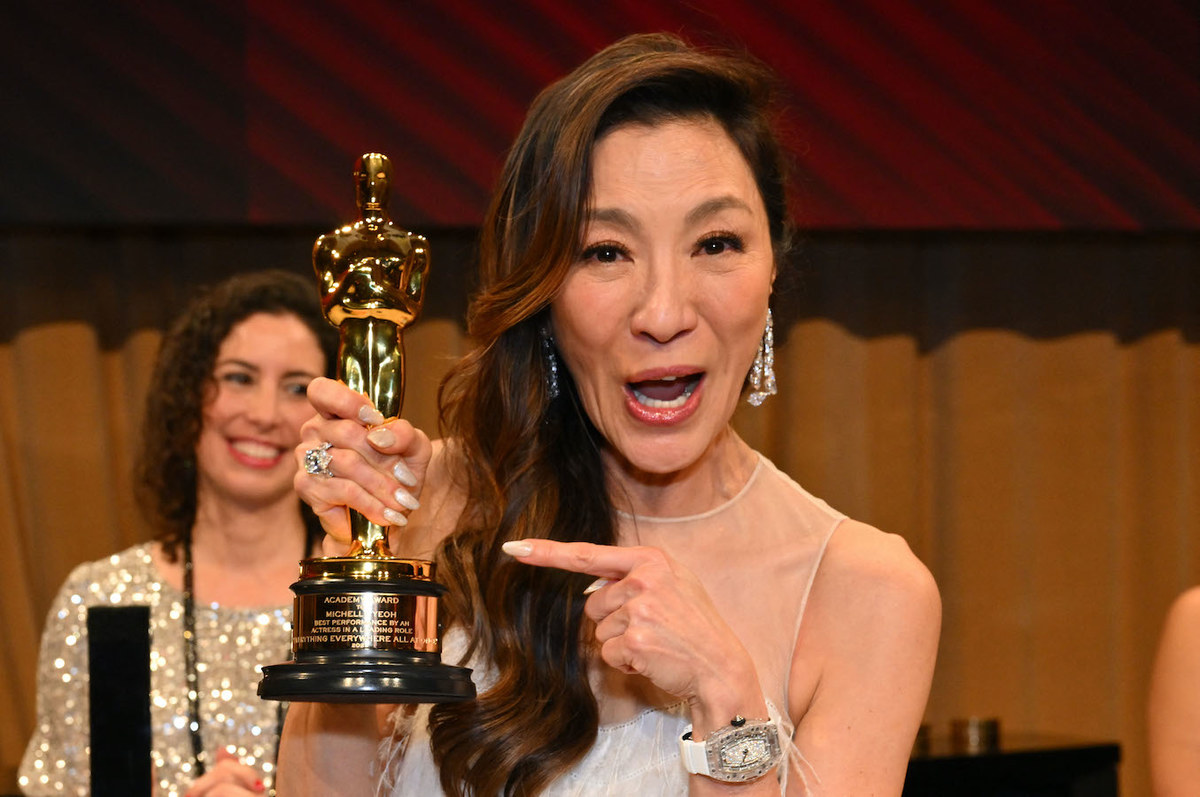
Yeoh became the first Asian woman to best actress. (AFP)
In winning best director, the Daniels — both 35 years old — won for just their second and decidedly un-Oscar bait feature. They’re just the third directing pair to win the award, following Robert Wise and Jerome Robbins (“West Side Story”) and Joel and Ethan Coen (“No Country for Old Men”). Scheinert dedicated the award “to the moms of the world.”
Best actor went to Brendan Fraser, culminating the former action star’s return to center stage for his physical transformation as a 600-lb. reclusive professor in “The Whale.” The best-actor race had been one of the closest contests of the night, but Fraser in the end edged Austin Butler.
“So this is what the multiverse looks like,” said a clearly moved Fraser, pointing to the “Everything Everywhere All at Once” crew.
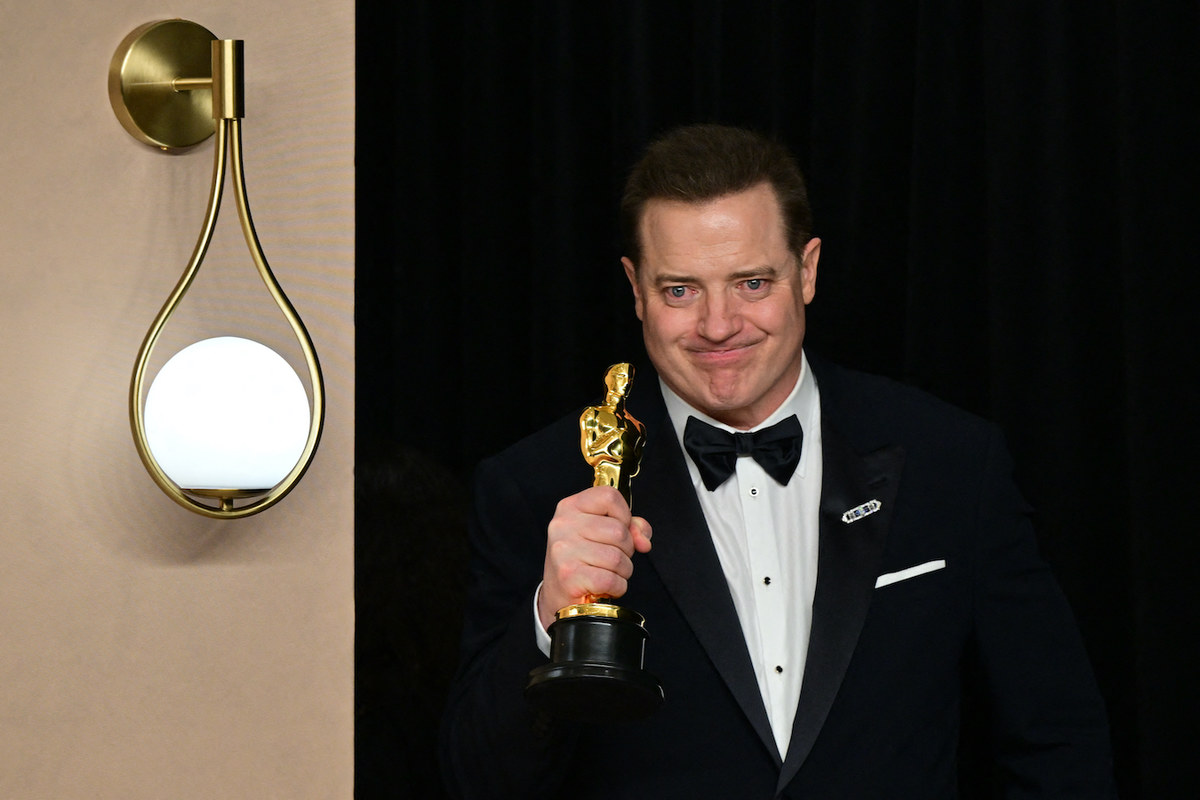
CaptionBest actor went to Brendan Fraser. (AFP)
The former child star Quan capped his own extraordinary comeback with the Oscar for best supporting actor for his performance in the indie hit “Everything Everywhere All at Once.”
Quan, beloved for his roles as Short Round in “Indiana Jones and the Temple of Doom” and Data in “Goonies,” had all but given up acting before being cast in “Everything Everywhere All at Once.”
His win, among the most expected of the night, was nevertheless one of the ceremony’s most moving moments. The audience — including his “Temple of Doom” director, Steven Spielberg — gave Quan a standing ovation as he fought back tears.
“Mom, I just won an Oscar!” said Quan, 51, whose family fled Vietnam in the war when he was a child.

US-Vietnamese actor Ke Huy Quan, winner of the Oscar for Best Actor in a Supporting Role for "Everything Everywhere All at Once", attends the 95th Annual Academy Awards. (AFP)
“They say stories like this only happen in the movies. I can’t believe it’s happening,” said Quan. “This is the American dream.”
Minutes later, Quan’s castmate Jamie Lee Curtis won for best supporting actress. Her win, in one of the most competitive categories this year, denied a victory for comic-book fans.
Angela Bassett (“Black Panther: Wakanda Forever”) would have been the first performer to win an Oscar for a Marvel movie.
It also made history for Curtis, a first-time winner who alluded to herself as “a Nepo baby” during her win at the Screen Actors Guild Awards. She’s the rare Oscar winner whose parents were both Oscar nominees, something she emotionally referenced in her speech. Tony Curtis was nominated for “The Defiant Ones” in 1959 and Janet Leigh was nominated in 1961 for “Psycho.” Curtis thanked “hundreds” of people who put her in that position.
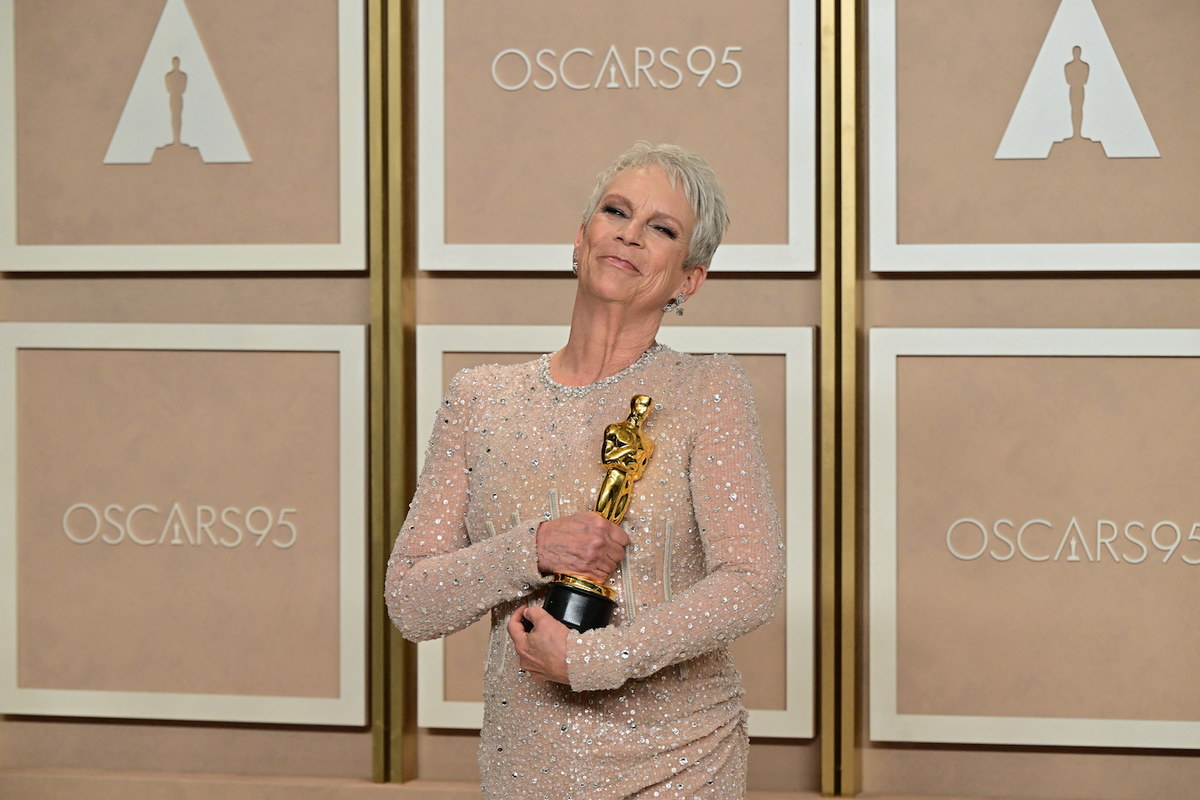
US actress and author Jamie Lee Curtis poses with the Oscar for Best Actress in a Supporting Role for "Everything Everywhere All at Once" in the press room during the 95th Annual Academy Awards. (AFP)
The German-language WWI epic “All Quiet on the Western Front” — Netflix’s top contender this year — took four awards as the academy heaped honors on the craft of the harrowing anti-war film. It won for cinematography, production design, score and best international film.
Though Bassett missed on supporting actress, Ruth E. Carter won for the costume design of “Wakanda Forever,” four years after becoming the first Black designer to win an Oscar, for “Black Panther.” This one makes Carter the first Black woman to win two Oscars.
“Thank you to the Academy for recognizing the superhero that is a Black woman,” said Carter. “She endures, she loves, she overcomes, she is every woman in this film.”
Carter dedicated the award to her mother, who she said died last week at 101.

US costume designer Ruth E. Carter accepts the Oscar for Best Costume Design for "Black Panther: Wakanda Forever" onstage during the 95th Annual Academy Awards. (AFP)
The telecast, airing live on ABC, opened traditionally: with a montage of the year’s films (with Kimmel edited into a cockpit in “Top Gun: Maverick“) and a lengthy monologue. Kimmel, hosting for the third time, didn’t dive right into revisiting Will Smith’s slap of Chris Rock at last year’s ceremony.
The late-night comedian struggled to find lessons from last year’s incident, which was followed by Smith winning best actor. If anyone tried any violence this year, Kimmel said, “you will be awarded the Oscar for best actor and permitted to give a 19-minute-long speech.”
But Kimmel, hosting for the third time, said anyone who wanted to “get jiggy with it” this year will have to come through a fearsome battalion of bodyguards, including Michael B. Jordan, Michelle Yeoh, Steven Spielberg and his show’s “security guard” Guillermo Rodriguez.
After landmark wins for Chloé Zhao (“Nomadland“) and Jane Campion (“The Power of the Dog“), no women were nominated for best director. Sarah Polley, though, won best adapted screenplay for the metaphor-rich Mennonite drama “Women Talking.”
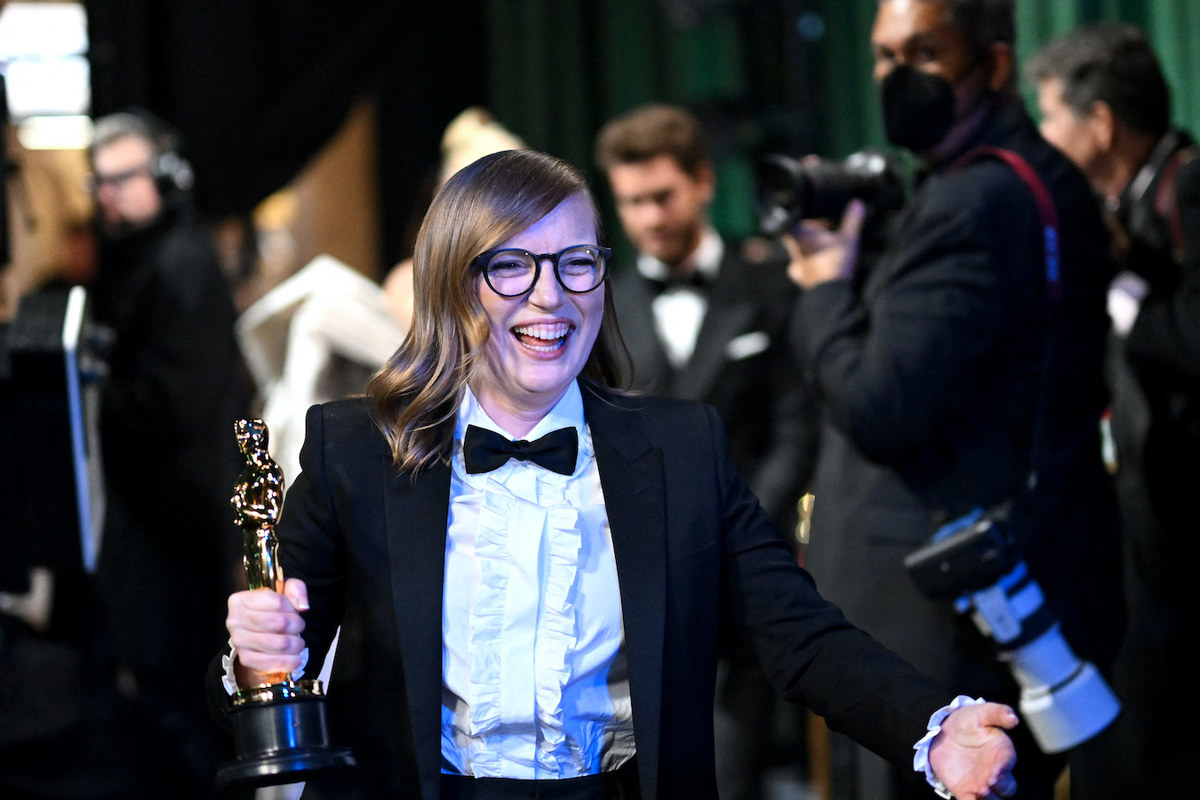
Best Adapted Screenplay winner for "Women Talking," Sarah Polley is seen backstage during the 95th Annual Academy Awards. (AFP)
“Thank you to the academy for not being mortally offended by the words ‘women’ and ‘talking,’” said Polley.
Daniel Roher’s “Navalny,” about the imprisoned Russian opposition leader Alexei Navalny, took best documentary. The film’s win came with clear overtones to Navalny’s ongoing imprisonment and Vladimir Putin’s continued war in Ukraine. Yulia Navalnaya joined the filmmakers on the stage.
“My husband is in prison just for telling the truth,” said Navalnaya. “Stay strong my love.”
Some big names weren’t in attendance for other reasons. Neither Tom Cruise, whose “Top Gun: Maverick” is up for best picture, nor James Cameron, director of best-picture nominee “Avatar: The Way of Water,” were at the ceremony. Both have been forefront in Hollywood’s efforts to get moviegoers back after years of pandemic.
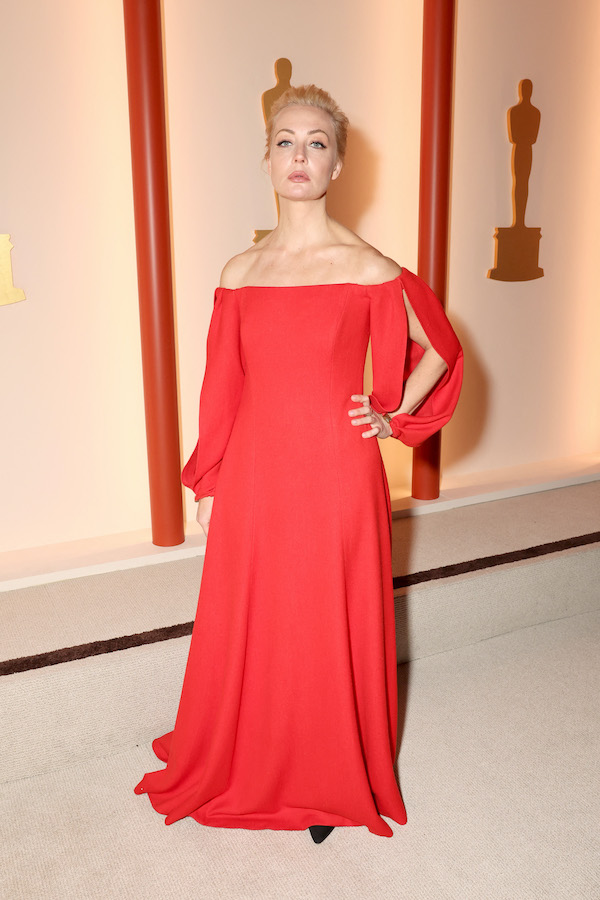
Yulia Navalnaya attends the 95th Annual Academy Awards. (AFP)
“The two guys who asked us to go back to theater aren’t in the theater,” said Kimmel, who added that Cruise without his shirt on in “Top Gun: Maverick” was “L. Ron Hubba Hubba.”
After last year’s Oscars, which had stripped some categories from being handed out in the live telecast, the academy restored all awards to the show and leaned on traditional song and and dance numbers. That meant some show-stopping numbers, including the elastic suspenders dance of “Naatu Naatu” from the Telugu action-film sensation “RRR,” an intimate, impassioned performance by Lady Gaga of “Hold My Hand” from “Top Gun: Maverick,” and an Super Bowl follow-up by Rihanna. Best song went to “Naatu Naatu.”
It also meant a long show. “This kind of makes you miss the slapping a little bit, right?” Kimmel said mid-show.
The night’s first award went to “Guillermo del Toro’s Pinocchio” for best animated film. That handed Netflix its first Oscar in the category.
After last year’s slap, the academy created a crisis management team to better respond to surprises. Neither Rock, who recently made his most forceful statement about the incident in a live special, nor Smith, who was banned by the academy for 10 years, attended.

TV host Jimmy Kimmel speaks onstage during the 95th Annual Academy Awards. (AFP)
The Academy Awards is attempting to recapture some of its old luster. One thing working in its favor: This year’s best picture field was stacked with blockbusters. Ratings usually go up when the nominees are more popular, which certainly goes for “Top Gun: Maverick” and “Avatar: The Way of Water.”
Neither won much, though. “The Way of Water,” with more than $2.28 billion in box office, won for best visual effects. The “Top Gun” sequel ($1.49 billion), took best sound.
Last year, Apple TV’s “CODA” became the first streaming movie to win best picture. But this year, nine of the 10 best picture nominees were theatrical releases. After the movie business cratered during the pandemic, moviegoing recovered to about 67 percent of pre-pandemic levels. But it was an up and down year, full of smash hits and anxiety-inducing lulls in theaters.
This year, ticket sales have been strong thanks to releases like “Creed III” and “Cocaine Bear” — which made not one but two cameos at Sunday’s show. But there remain storm clouds on the horizon. The Writers Guild and the major studios are set to begin contract negotiations March 20, a looming battle that has much of the industry girding for the possibility of a work stoppage throughout film and television.
The Oscars, too, are seeking steadiness. Last year’s telecast drew 16.6 million viewers, a 58 percent increase from the scaled-down 2021 edition, watched by a record low 10.5 million.


























